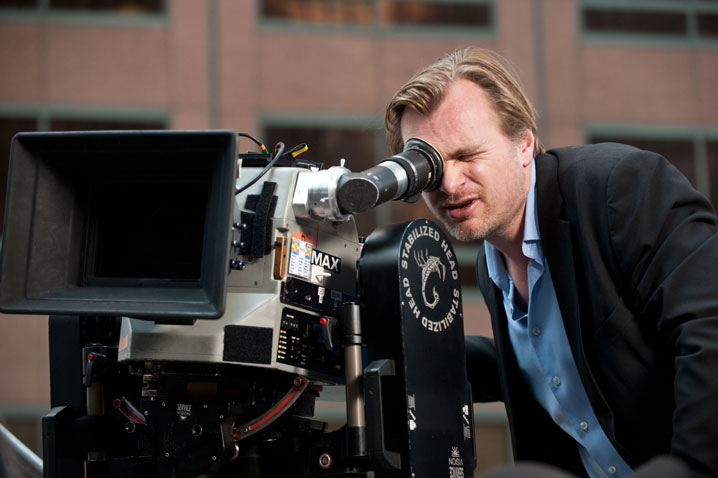 The past few years have seen the movie industry caught up in a tidal wave towards digital, but filmmakers who prefer analog are fighting back. Quentin Tarantino is already making plans for his western "The Hateful Eight" to have the widest 70mm release in twenty years, while next month, Christopher Nolan is dropping "Interstellar" into theaters with 35mm and 70mm projection two days early. That latter bit of news hasn’t made theater owners, who have invested heavily in switching to digital projection at the behest of studios, very happy. But according to Alamo Drafthouse head Tim League, theater owners are in business to serve the needs of filmmakers.
The past few years have seen the movie industry caught up in a tidal wave towards digital, but filmmakers who prefer analog are fighting back. Quentin Tarantino is already making plans for his western "The Hateful Eight" to have the widest 70mm release in twenty years, while next month, Christopher Nolan is dropping "Interstellar" into theaters with 35mm and 70mm projection two days early. That latter bit of news hasn’t made theater owners, who have invested heavily in switching to digital projection at the behest of studios, very happy. But according to Alamo Drafthouse head Tim League, theater owners are in business to serve the needs of filmmakers.
"I share that pain," League wrote in an op-ed for Deadline about the financial strain of converting to digital, but he makes it clear what his stance is. "I ask all cinema owners, what is our relationship to filmmakers? I consider myself a venue in service of the creative visionaries who create the stories and experiences for which we charge," he writes. "If Christopher Nolan prefers for his movie to be projected from 35mm or 70mm prints, then we as an industry should respect his vision and do our best to support it."
While he acknowledges the benefits of digital projection, and League notes that of "the approximately 40,000 screens in the US, less than 400 are showing ‘Interstellar’ on film. This speaks to a tiny fraction of total number of screens in America still having the ability to project film. During the conversion to digital, most exhibitors made a conscious decision to turn their back on 35mm projection forever."
Turning to his own theater, League uses his location in Yonkers, which is 35mm capable, as an example, saying, "In less than six months, 35mm revenues paid off the initial investment of approximately $25,000. Preserving the art of 35mm projection isn’t just nostalgic, it makes financial and practical sense." He continues with a rather noble statement-of-purpose: "Our mission as cinema owners should be to build a young cinephile audience….We should be finding ways to inspire a young generation to fall in love with going to the cinema just like Tarantino, Nolan and many of us theater owners did when we were kids. I want a younger generation to love classic films, to appreciate the shared experience, and to have a passion for film history. The only way we can do that is to ensure that 35mm never dies."
League’s passion is undeniable, and he makes some strong points, but there is another side to this conversation as well. Alamo Drafthouse is in a unique position to keep a 35mm projector running, pay a projectionist, and do enough business to cover those costs, because they operate in markets where that’s viable. But for smaller chains, in markets that don’t have a built-in, ready-made audience for cult movies, it’s not necessarily a practical business decision. They rely on blockbusters to pay their bills, and if the industry says those movies will now be served digitally, they have to respond in kind.
This is a complicated issue, with preservation, distribution, and projection of 35mm and 70mm film still needing to find a space in a marketplace where digital, 3D screenings are what keeps the lights on. And the duties of cinema owners also vary from place to place. That said, League’s view will keep the discussion going, so be sure to share your thoughts below.

